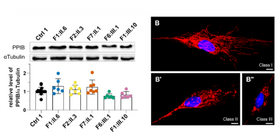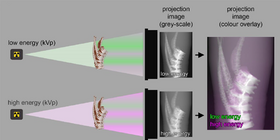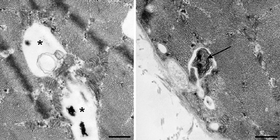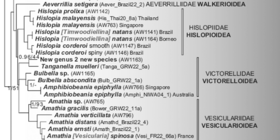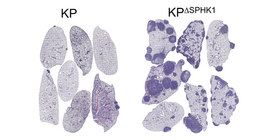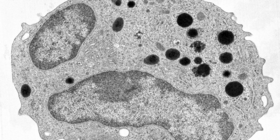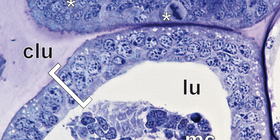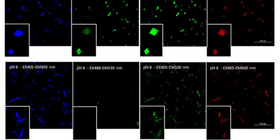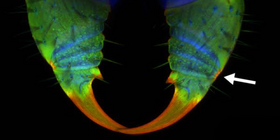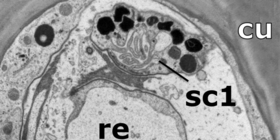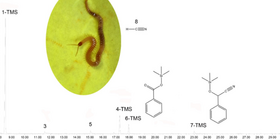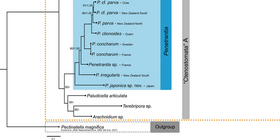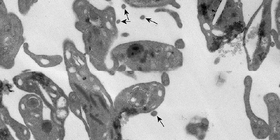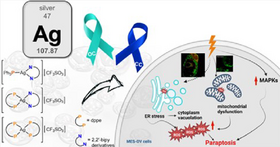Functional ultrastructure
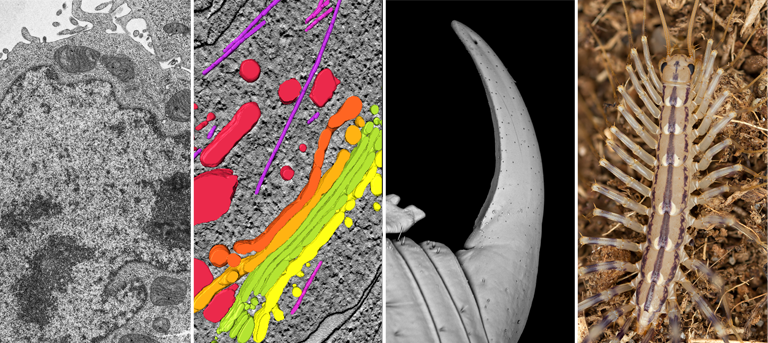
In the dynamic landscape of cell biology, understanding the complex details of functional ultrastructures is crucial for unraveling cellular processes. Our primary objective is to provide a comprehensive understanding of cellular dynamics by employing electron microscopic techniques to explore tissues and cells.
In addition to collaborative biomedical projects, our research explores various facets of arthropod anatomy, including the cellular organization and variability of epidermal and venom glands, the anatomy of respiratory systems, appendage development and regeneration, and the intricacies of sensory organs and primary processing centers within the nervous system. Centipedes exhibit venomous forcipules and evolutionarily innovative appendages, with the last pair of legs being particularly transformed in many species. These ultimate legs serve diverse functions like claw-like structures used for physical defense, sensory appendages resembling reverse antenna or aggregates of epidermal glands that transform the appendage into a predominantly glandular organ.
These insights not only contribute to our fundamental biological knowledge but also hold promising applications in the biomedical field. To analyze centipede anatomy, morphology, evolutionary transformations, and functional ultrastructures, we employ multimodal microscopic techniques, with a special emphasis on transmission electron microscopy.
